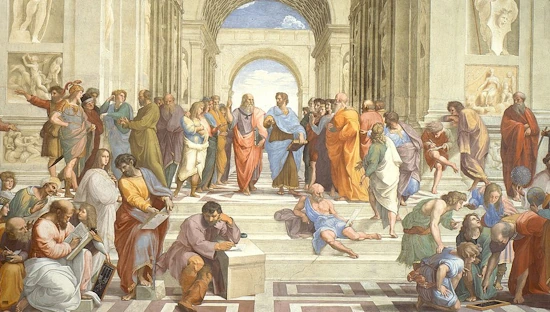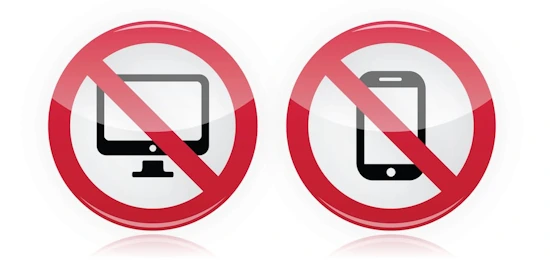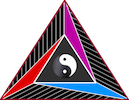The examination of the nexus between technology and spiritual development presents an intriguing dialogue in which transcendence, enlightenment, and the essence of relationality converge. This inquiry aims to foster a “hospitable conversation,” challenging the binary perspective of technological progress as either an impediment or a conduit for the spiritual awakening and transformation of humanity. The fundamental argument is that technological societies must cultivate spiritual dimensions, recognizing that technological advances may illuminate a more nuanced and profound metaphysical meaning than previously perceived.

This article examines the complex relationship between technological innovation and spiritual growth, exploring the ways in which the digital age affects our pursuit of higher consciousness and inner development. The article addresses the paradoxes of connectivity and disconnection brought on by technological advancements, seeking a balance that supports spiritual intentionality amidst a world increasingly mediated by technology. By analyzing the challenges and opportunities presented by this dynamic interplay, the discourse aims to pave the way for a more integrative approach, where technological advancements and transcendental evolution mutually inform and enrich each other, promoting a holistic understanding of our place within the cosmos.
The Historical Journey of Technological Innovations
Technology has been a defining force in shaping human societies, especially evident from the Stone Age to the present technological era. In the initial stages of human evolution, the utilization of rudimentary tools, such as stone hand axes and fire, played a pivotal role in ensuring the survival and advancement of our species. As societies advanced, so did their technological innovations, leading to the Neolithic Revolution. This introduced agriculture and animal husbandry, which fundamentally changed human settlement patterns and social structures.
Throughout history, various civilizations have made distinctive contributions to the technological landscape. The introduction of metal tools and weapons during the Bronze and Iron Ages significantly altered economic and warfare strategies. In ancient civilizations such as Mesopotamia, Egypt, and the Indus Valley, technological innovations included irrigation systems, the plow, and early forms of writing, which facilitated administrative tasks and communication. The contributions from East Asia, the Indian subcontinent, and the Islamic world during the medieval period were particularly noteworthy in fields such as paper making, printing, and gunpowder, all of which had a profound impact on cultural and scientific practices globally.
In Europe, the Renaissance marked a period of accelerated technological advancement, with the advent of the printing press, mechanical clocks, and refined building techniques. These innovations not only facilitated the dissemination of information but also enhanced the quality of life. This period laid the foundation for subsequent industrial revolutions that introduced mechanized production, which has led to the current digital age. In this age, information technology and artificial intelligence redefine human interaction, governance, and economic systems. This rapid evolution, while beneficial, has also led to challenges in aligning technological capacities with human values and spiritual growth. This underscores the need for a balanced approach to technological adoption.
Defining Spiritual Evolution
Spiritual evolution, often referred to as ‘Higher Evolution,’ distinguishes itself from biological evolution by focusing on the development of the mind or spirit. Unlike the random, survival-driven changes of biological evolution, spiritual evolution is teleological, meaning it is purpose-driven and oriented towards a final goal. This concept is rooted in the philosophy of the Great Chain of Being, which traces back to thinkers like Plato, Aristotle, and Plotinus, and later influenced theological ideas in Western thought. Here, the evolution of the spirit is seen as a journey through various stages or realms, each representing a qualitative shift in the soul’s experience and understanding.

The process of spiritual evolution can be divided into four distinct stages: self-recognition, self-awareness, self-awakening, and ultimately, freedom from attachments. Initially, an individual recognizes their own existence and separateness from others. This recognition deepens into self-awareness, where one becomes cognizant of their inner spirit and the presence of other metaphysical entities, fostering a serene state of mind. As one progresses to self-awakening, there is a profound clarity about one’s own nature and the surrounding world, often altering life perspectives and meanings. The final stage, freedom from bondage, is where individuals seek spiritual independence, striving to break free from the cycles of reincarnation and the constraints of worldly existence.
Throughout these stages, a variety of practices facilitate the individual’s pursuit of enlightenment. Techniques such as Qigong assist in maintaining equilibrium and deepening comprehension. Meditation, participation in sacred ceremonies, and guidance from enlightened teachers facilitate the dissolution of the layers of ego, identities, and samskaras—impressions derived from past experiences that shape one’s psychophysiology. These practices are crucial for advancing towards spiritual liberation, a state characterized by the transcendence of worldly attachments and the realization of a higher, more unified state of consciousness. This transformative process is not only about personal enlightenment but also involves the relational and immanent aspects of spirituality, where the divine is recognized both in oneself and in one’s interactions with others, fostering a holistic spiritual growth.
The Paradox of Connectivity
The advent of technological innovations has profoundly compressed temporal and spatial dimensions, thereby revealing that individuals are not isolated entities but rather are interconnected. The shrinking of the world fosters a sense of unity, yet also presents challenges. For instance, the ubiquity of social media and instant communication platforms has been shown to foster addictive behaviors, resulting in alterations to brain chemistry that crave constant gratification and immediate responses. This dependency can detract from the depth and quality of personal interactions, which are essential for genuine human connection.
It is of the utmost importance to achieve a healthy equilibrium between digital and in-person interactions. The author recommends that individuals dedicate undivided attention to their loved ones and fully immerse themselves in moments free from digital distractions. This approach enables individuals to gain access to a world beyond the immediate chaos of constant connectivity, thereby promoting the development of deeper relationships and a more profound sense of presence. Conversely, without meticulous oversight, technological engagement may result in a detachment from both nature and the self, potentially impeding spiritual growth. The allure of digital interactions often prioritizes quantity over quality, leading to superficial connections that may not satisfy deeper emotional and otherworldly needs.

Despite these challenges, technology also offers significant benefits. It enhances communication, provides access to a plethora of spiritual and educational resources, and opens doors to new forms of community and spiritual practice. For example, individuals who may experience a decline in traditional religious affiliation due to technological influences might also find new ways to explore spirituality through online platforms. These resources can facilitate the development of faith and spiritual understanding in a multitude of ways, indicating that the relationship between technology and spirituality is intricate and multifaceted.
Technological Advancements and Their Spiritual Implications
Technological advancements have significantly shaped the landscape of spiritual practices and perceptions. The integration of technology in daily life has not only facilitated access to spiritual content but also expanded the methods through which individuals engage with spirituality. For example, the proliferation of online platforms has facilitated the democratization of access to a variety of metaphysical teachings, which were previously confined to specific geographical locations. This ease of access is exemplified by the rise of digital platforms that offer live-streamed religious ceremonies and virtual meditation sessions, which enable individuals to participate in spiritual practices from anywhere in the world. Moreover, social media networks have become indispensable resources for spiritual leaders and organizations, enabling them to disseminate their messages to a broader audience and foster a global community of followers.
At a more profound level, the convergence of technology and spirituality is profoundly influencing the very fabric of spiritual understanding and experience. Technological tools such as virtual reality (VR) and augmented reality (AR) are being employed to create immersive transcendental experiences. These include virtual pilgrimages to sacred sites and simulated meditation environments. These technologies not only enhance the sensory experience of spirituality but also assist individuals in visualizing and comprehending complex metaphysical concepts in a more tangible manner. Moreover, the utilization of technology in the analysis of somatic-based transformative spiritual practices (SBTSPs) is paving the way for optimized spiritual techniques that could potentially lead to more profound personal transformations.
Nevertheless, the integration of technology in spirituality is not without its challenges. The accelerating pace of technological advancement can occasionally result in a superficial engagement with spiritual practices, with the focus shifting from the pursuit of profound personal transformation to the pursuit of transient experiences. Furthermore, the increasing reliance on technology for spiritual engagement raises questions about the authenticity and depth of the metaphysical journey. Consequently, it is of the utmost importance for spiritual traditions to adapt and evolve in response to technological advancements while maintaining the core tenets of inner growth. This adaptation necessitates a critical examination of the manner in which technologies are implemented in spiritual contexts, with the objective of ensuring that they complement rather than substitute for the essence of spiritual practices.
Balancing Technological Dependence with Spiritual Intentionality
In an era where digital tools are integral to everyday life, achieving a balance between technological dependence and spiritual intentionality is crucial. This balance is not about rejecting technology but about integrating it in a way that supports our spiritual well-being. Here are some practical strategies to harmonize these aspects:
Prioritize Tech-Free Time
- Set Boundaries for Technology Usage: Designate certain hours of the day as tech-free, allowing you to disconnect from digital distractions and reconnect with your inner self. This could be during meals, the first hour after waking up, or before bedtime.
- Engage in Digital Detoxes: Periodically, take a day or weekend off from all digital devices to reset your mental space and reduce dependency on technological stimulation.
Cultivate Spiritual Practices
- Daily Meditation and Yoga: Incorporate spiritual practices like meditation or yoga into your daily routine. These practices not only reduce stress but also enhance your awareness and connection to a deeper, celestial existence.
- Participate in Community Spiritual Activities: Join local or online groups for meditation sessions, metaphysicall discussions, or prayer groups. These interactions can enrich your spiritual journey and reduce the feelings of isolation that technology sometimes brings.
Integrate Technology with Spiritual Growth
- Use Apps for Mindfulness and Meditation: Leverage technology to aid your transcendental practices. Apps that guide meditation, provide yoga routines, or offer spiritual teachings can be valuable tools in your spiritual arsenal.
- Virtual Spiritual Communities: If physical attendance is challenging, participate in virtual religious services or spiritual workshops that allow for the exploration of spirituality without leaving your home.
By consciously choosing how and when to engage with technology, individuals can ensure it serves as a tool for enhancing, rather than detracting from, spiritual growth. This approach not only fosters a deeper connection with the self but also with the larger community, promoting a balanced and fulfilling life.
Case Studies: Positive and Negative Examples
In the context of spiritual evolution, technology’s dual role is illustrated through a variety of personal and scholarly perspectives. Lance Volk, a spiritual teacher, emphasizes the necessity of maintaining equilibrium between technological use and transcendental practices. He posits that while technology can distract from spiritual pursuits, it also has the potential to be a beneficial influence in our physical lives without impeding spiritual growth, provided it is used judiciously.

Radhanath Swami, another esteemed spiritual leader, articulates a similar sentiment but places greater emphasis on the user’s intent. He proposes that technology itself is neutral and can either be beneficial or detrimental, depending on whether it is used with virtuous or malicious intentions. This perspective is echoed by Jahnu Dasa and Cosmos Slag, who both view science and spirituality as complementary forces. They posit that both domains endeavor to elucidate the universe’s mysteries, with spirituality addressing the non-material aspects that science often overlooks.
Conversely, the integration of technology in spiritual contexts does not always yield positive outcomes. A study on Czech Christian believers’ perceptions of technologically mediated religious services revealed a spectrum of attitudes. While some participants perceived digital platforms as offering new avenues for engaging with their faith during the COVID-19 pandemic, others felt that these technologies diminished the authenticity of their metaphysical experiences. This dichotomy highlights the nuanced impact of technology on spiritual practices, suggesting that its benefits are closely tied to how it is implemented and perceived within religious communities.
Conclusion
An investigation into the intricate interplay between technological advancements and spiritual evolution has illuminated a complex yet fascinating dialogue on how these domains intersect and influence each other. The essence of our investigation reveals that while technological progress can sometimes appear as an obstacle to spiritual growth, it equally holds the potential to enhance and deepen our metaphysical journey. This dual capacity of technology presents a challenge to find a harmonious balance, recognizing that the path toward divine enlightenment and the embrace of technological innovation are not mutually exclusive but can, in fact, complement and enrich one another.
The dialogue around this topic suggests that fostering a mindful and intentional approach towards technological engagement is crucial for nurturing our ethereal well-being. By prioritizing practices that align with our otherworldly goals and employing technology in ways that support rather than detract from our personal growth, we can navigate the complexities of the modern world while advancing on our spiritual paths. As we continue to investigate and comprehend this relationship, the far-reaching implications for individual fulfillment and collective evolution become increasingly significant, compelling us to integrate these insights into our lives with discernment and purpose.
What about you? Are you obsessed with technology? Or do you also listen to the needs of your spirit? We created various personality tests that can help you better understand yourself and your relationship with technology.
TAKE THE AWARENESS TEST
TAKE THE GREAT PERSONALITY TEST
TAKE THE LOGICAL INTELLIGENCE TEST
MINI SELF-ASSESSMENT TEST: ARE YOU A TECH ADDICT?
Read the sentences below and select the ones you agree with and that you think make the most sense.
Count the number of boxes checked and read the corresponding profile.
0: You are by no means a tech addict
1-2: You are hardly a tech addict
3-4: You are quite a tech addict
5-6: You are totally a tech addict
